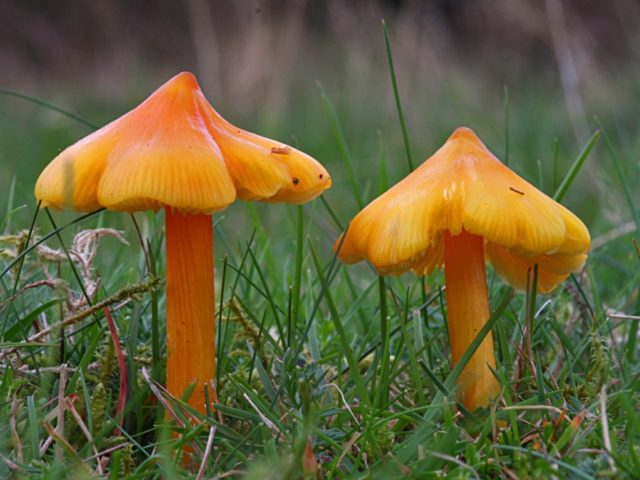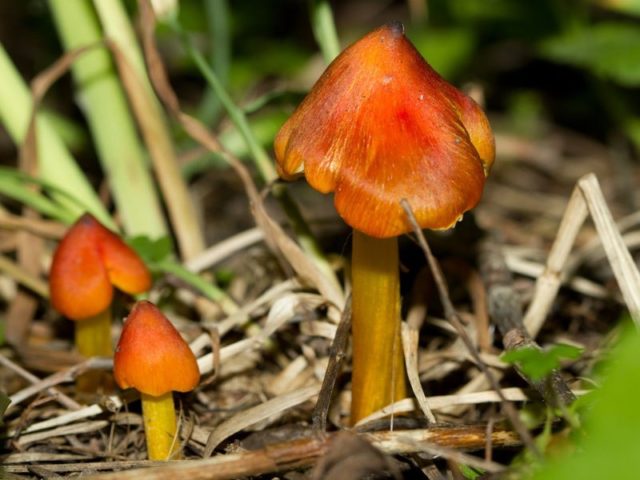Content
The conical hygrocybe is a member of the widespread genus Hygrocybe. The definition arose from the sticky skin of the top of the fruiting body, soaked in liquid. In the scientific literature, the mushroom is called: hygrocybe persistent, Hygrocybe persistens, Hygrocybe acutoconica, Hygrocybe conica.
There is another option for domestic use: a wet head.

A distinctive feature of the inedible variety is the pointed tip of the bright mushroom body
What does a hygrocybe look like?
The cap has a tapered cone shape, which is especially characteristic of young mushrooms. As the edges grow, the silhouette of the apex becomes wide-conical. The tubercle in the middle remains, the fragile border often breaks. Thin-fibred, smooth skin becomes slippery, sticky after rain. In the dry period, it seems shiny, silky. The width of the upper part is up to 9 cm, so the mushroom is noticeable both in size and in bright color:
- the entire surface area is yellow-orange or yellowish;
- the elevation in the center is much more intense in color.
At the end of growth, the entire surface becomes darker. When pressed on the fruit body, the skin also darkens.
Light yellow plates of the type are loose or, conversely, are tightly attached to the cap. Their edges are widened. The plates often do not reach the rim. In old mushrooms, the plates are grayish; when pressed, a dark gray color also appears.
Thin yellowish flesh is fragile, because of this, the edge is often torn, after pressure it turns black. Spore powder is white.
High, up to 10-12 cm, the stem is very thin, only 9-10 mm. Smooth, straight, slightly thickened at the base, fine-fibered, hollow inside. The color of the surface corresponds to the shade of the top, at the bottom it lightens to white.

Fruit bodies of a wet head with toxic substances are distinguished by long thin legs, which distinguish them from similar species
Where does the hygrocybe grow acutely
The species is common in Eurasia and North America in the temperate zone, especially in warm regions. More often, brightly colored mushroom families are found in wet meadows, in old gardens, less often in glades and edges of mixed forests from late spring to the first frost. Hygrocybe sharp-conical prefers alkaline sandy soil, grows under solitary deciduous trees.
Fruit bodies are similar to other wet heads with a brightly colored surface, especially a slightly poisonous conical hygrocybe, the surface of which darkens after pressing.

The fruiting body of a similar mushroom turns black after ripening.
Is it possible to eat a hygrocybe acutely conical
Toxic substances have been identified in the pulp of yellowish-orange moist heads with a pointed tip. The conical hygrocybe is inedible. No pronounced odor emanates from the pulp. Poisons of the sharp-conical type are not fatal, but can cause serious illness.An orange-yellow cone-shaped hat with a pointed tubercle in the center should serve as a warning to inexperienced mushroom pickers.
Conclusion
The conical hygrocybe is a representative of a widespread genus, which includes small mushroom bodies conditionally edible and inedible, some of which are poisonous. The brightly colored pointed tip signals that the mushroom should not be picked.








